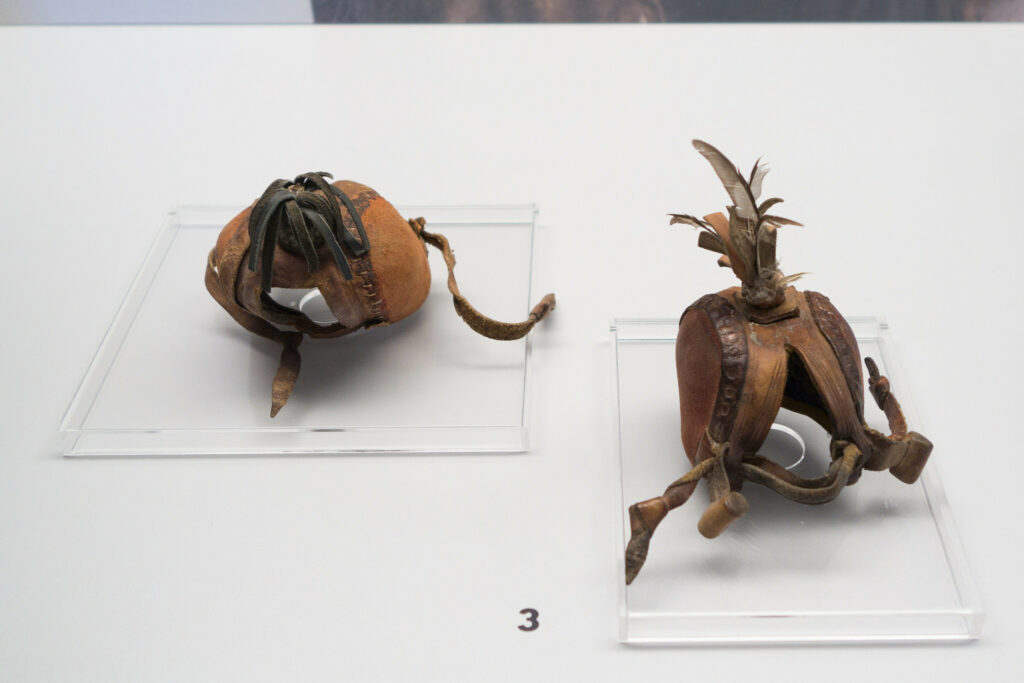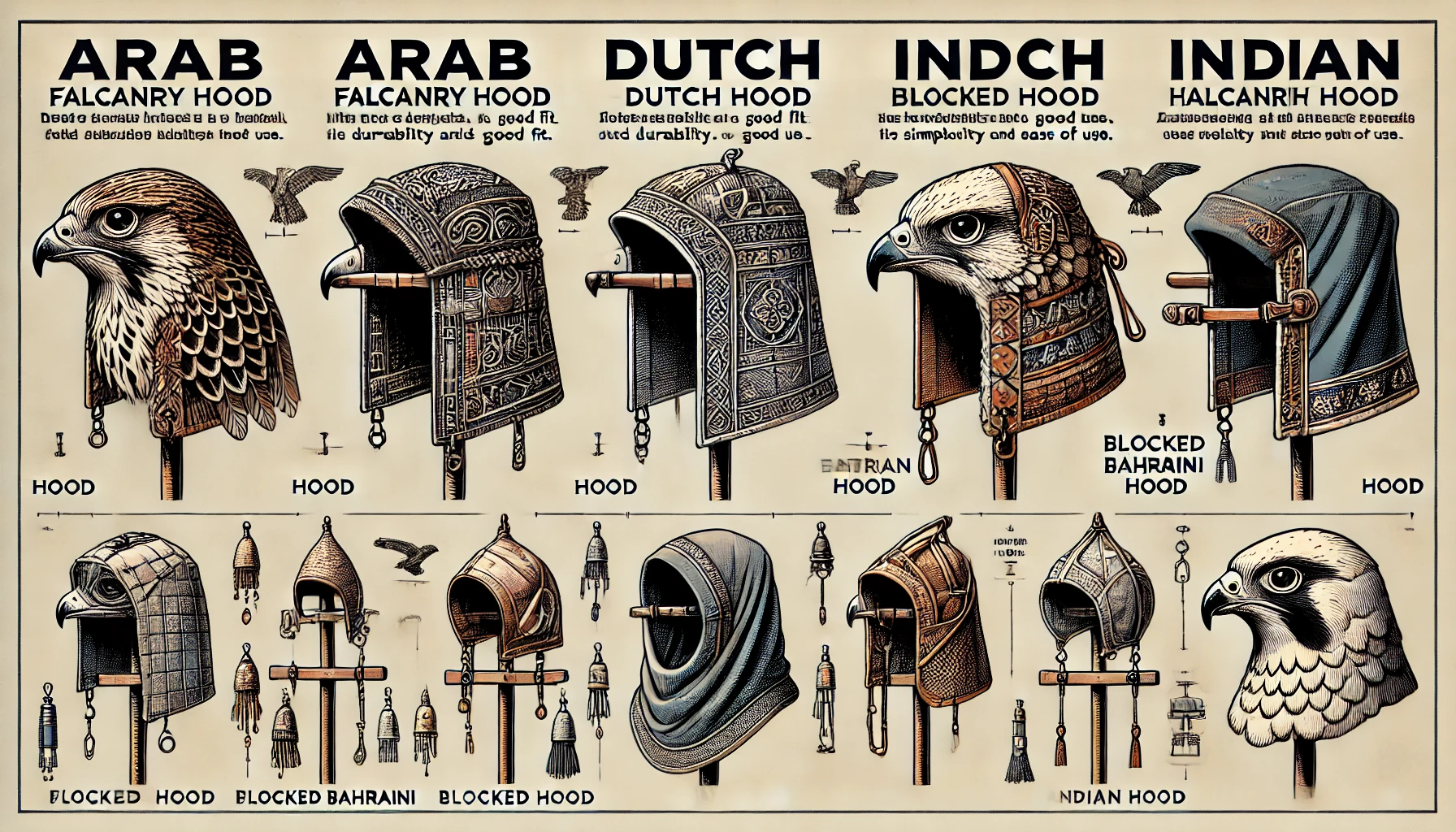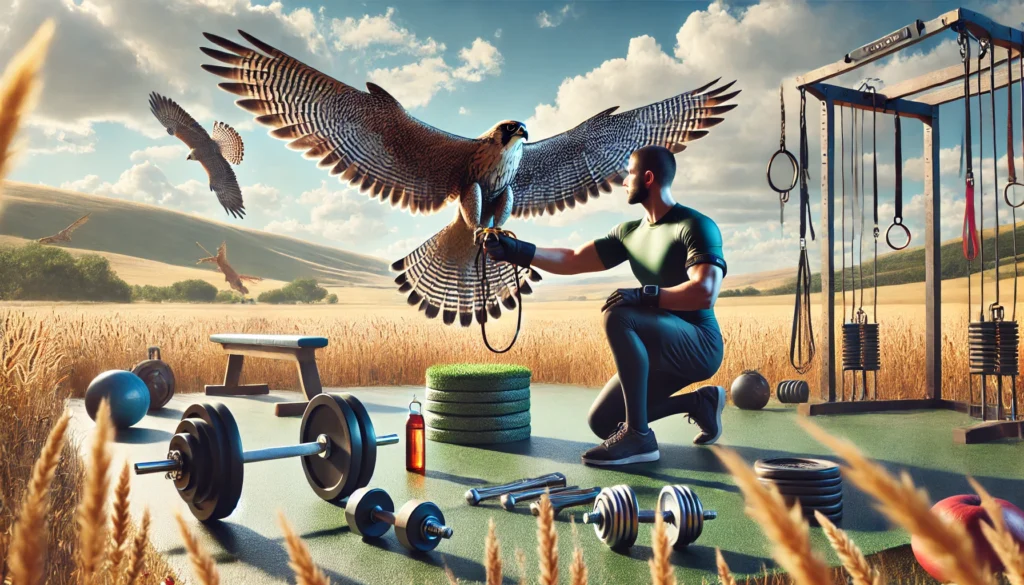Types of Falconry Hoods: Key Insights
- Purpose of Falconry Hoods: Falconry hoods keep the bird calm, ease introductions to new environments, and help with training.
- Basic Hood Styles:
- Arab Hood: Known for its intricate design, provides comfort and is effective for calming birds.
- Dutch Hood: Favored for its fit and durability, often used for more active birds.
- Indian Hood: Characterized by its simplicity and ease of use, great for beginners.
- Materials Used:
- Leather: Most common material, known for its durability and comfort.
- Synthetic Fabric: Lightweight option, useful for birds sensitive to weight.
- Custom Fit Importance: Ensuring the hood fits well is crucial for the bird’s comfort and effectiveness.
- Choosing the Right Hood: Consider factors like bird species, size, activity level, and training needs.
Remember, a good hood makes a big difference in your falconry experience!
Discovering the Different Types of Hoods in Falconry: An Irish Tale
Imagine you’re in the heart of Ireland, wandering through the lush, green countryside. As you stroll, you come across an ancient structure’a stone castle towering above the rolling hills. Much like this grand castle, every falconer knows that each falcon needs a suitable hood, a unique piece of gear that goes beyond mere function to embody the tradition and art of falconry.
At Learn Falconry, we believe that understanding the types of hoods is as essential as knowing which suit of armor a knight would wear; each serves a specific purpose, ensuring both protection and peak performance. Our article will take you on a journey through the different kinds of hoods, explaining why they matter and how they enhance your experience with your feathered friend.
Types of Falconry Hoods
Falconry hoods are crucial pieces of equipment that protect a falcon’s eyes and help keep them calm and focused. In falconry, these hoods serve several important purposes, from aiding in training to ensuring the safety and health of the bird. Understanding the different types of falcon hoods is essential for both novice and experienced falconers.
What Are Falconry Hoods?
Falconry hoods, also known as falcon hoods, cover a bird’s head, blocking out visual distractions. This helps the falcon stay calm, reduces stress, and allows the falconer to manage the bird more effectively. Hoods are crucial during various activities like transportation, training, and hunting, ensuring the falcon’s well-being and mitigating any potential hazards.
Hoods are typically crafted from soft, durable materials like leather, and come in various sizes and styles to fit different species and ages of falcons.
Different Types of Falcon Hoods
There are many types of falcon hoods used in falconry, each designed with a specific purpose in mind:
1. Dutch Hoods
Dutch hoods are a popular design in falconry. These hoods have a fixed fit and are known for their intricate craftsmanship. They are often richly decorated and customized to fit each bird perfectly. The Dutch hood’s main feature is its sturdy construction and comfortable fit.

Explore more about falconry equipment including Dutch hoods on our Falconry Equipment page.
2. Arabian Hoods
Also known as Khalij hoods, these are traditional and widely used in Middle Eastern falconry. Arabian hoods are often simple in design but highly functional and easy to use. They offer excellent comfort and breathability for the birds while maintaining their effectiveness in keeping the falcon calm.
Learn more about the historical significance of Arabian hoods in falconry on our Falconry in the Middle East page.
3. Indian Hoods
Indian hoods, or “Pesh-cush,” are designed with decorative elements and are relatively easy to put on and take off. These hoods often feature vibrant colors and intricate patterns. Indian hoods are valued for their lightweight and breathable materials, which contribute to the falcon’s comfort.
Discover more about ancient falconry practices including Indian hoods on our History of Falconry page.
4. Block Hoods
Block hoods are used primarily during the early stages of training. They are designed to help young falcons acclimate to the hooding process. These hoods are generally simpler in design and may lack the decorative elements found in other types. They offer a secure fit and are easy to adjust.
For more insights on training young falcons, visit our Training a Falcon page.
5. Seamless Hoods
Seamless hoods, as the name suggests, have no visible seams. They are crafted to provide a smooth, comfortable fit. These hoods are often preferred for their durability and snug fit, which reduces the chance of rubbing or discomfort.
Explore more about the latest innovations in falconry gear including seamless hoods on our Innovations in Falconry Tools page.
Choosing the Right Hood
Selecting the right type of falcon hood is essential for the bird’s comfort and safety. Falconers must consider the size, shape, and specific needs of their bird when choosing a hood. Proper measurement and fit are critical to ensuring that the hood serves its purpose without causing any distress to the falcon.
To learn more about different falcon species and their specific hood requirements, visit our Species of Falcons page.
By understanding the different types of falconry hoods and their uses, falconers can ensure they provide the best care and training environment for their birds. For more detailed information on various falconry techniques and equipment, feel free to explore our extensive resources.
Introduction to Falconry Hoods
Falconry hoods are essential tools in the sport of falconry. These hoods help in keeping hawks calm and protected during handling and transportation. In 2024, there are three main styles of falconry hoods: Dutch, Anglo-Indian, and Arabic. Each type has unique features and benefits. Understanding these types can help falconers choose the best one for their birds. This article dives into their key characteristics, sizes, materials, and construction processes, offering a deeper understanding of falconry hoods.
Main Styles of Falconry Hoods
Dutch Hoods
- Characteristics: The Dutch hood is known for its traditional opening for the beak and a special closure with braces.
- Shape and Pattern: This hood typically has a rounded top with a snug fit around the bird’s head.
Anglo-Indian Hoods
- Characteristics: The Anglo-Indian hood is shaped differently and uses a specific number of pattern pieces in its construction.
- Shape and Pattern: Often more angular, this hood is designed for a precise fit and can vary significantly in appearance based on the number of pieces used.
Arabic Hoods
- Characteristics: The Arabic hood stands out due to its unique shape and closure mechanism, which differs from Dutch and Anglo-Indian hoods.
- Shape and Pattern: This hood often features intricate designs and a distinctive flap or string closure.
Key Features of Falconry Hoods
Eye Clearance and Beak Opening
- Eye Clearance: Ensuring the hawk’s eyes are not obstructed is crucial for the bird’s comfort.
- Beak Opening: The hood must allow the hawk’s beak to move freely, ensuring ease of breathing and comfort.
| Hood Type | Eye Clearance | Beak Opening |
|---|---|---|
| Dutch | High | Traditional Opening |
| Anglo-Indian | Medium | Precise Beak Fit |
| Arabic | High | Unique Opening Design |
Materials Used in Falconry Hoods
Falconry hoods are typically made from high-quality leather and other breathable materials to ensure comfort and durability.
| Material Type | Description |
|---|---|
| Sheep Skiver | Soft leather, often used for comfort and flexibility. |
| Kip | Durable and sturdy, suitable for heavy use. |
| Iguana | Exotic and luxurious, often used for high-end hoods. |
Construction Methods
Hand-Stitched vs. Machine-Stitched
- Hand-Stitched: These hoods are often considered more durable and can be customized more easily.
- Machine-Stitched: Generally produced faster and may be more consistent in quality.
| Aspect | Hand-Stitched | Machine-Stitched |
|---|---|---|
| Durability | High | Medium to High |
| Customization | High | Low to Medium |
| Consistency | Variable | High |
Customization and Availability
Falconry hoods can be customized with personal initials, family crests, or other unique designs. These hoods are available from various sources, including online retailers and specialty stores.
| Customization Option | Description |
|---|---|
| Initials | Adding the owner’s initials for personalization. |
| Family Crests | Embellishments that represent family heritage. |
| Unique Designs | Various colors and patterns tailored to preference. |
Sizes Available
Falconry hoods are made to fit different species of hawks, from small kestrels to large eagles.
| Species | Sample Size (Inches) |
|---|---|
| Kestrel | 1.5-2 |
| Merlin | 2-2.5 |
| Gyrfalcon | 3-3.5 |
| Peregrine | 2.5-3 |
| Eagle | 3.5-4 |
In this exploration of falconry hoods, each type and its specific characteristics offer unique benefits, tailored to meet the needs of various hawks. Whether it’s the traditional Dutch hood or the uniquely designed Arabic hood, these tools play a vital role in the sport of falconry.
Final Thoughts on Choosing the Right Falconry Hood
Selecting the right falconry hood is essential for keeping your hawk calm and comfortable. There are three main styles to consider: Dutch, Anglo-Indian, and Arabic, each with its unique shape and closure mechanism. Key features such as eye clearance and beak openings are crucial for ensuring a proper fit, while the hoods are usually made from high-quality leather and other breathable materials. Customization options, like adding personal initials or family crests, allow for a more personalized touch. Whether you opt for a hand-stitched or machine-stitched hood, the goal remains the same’providing your falcon with the utmost comfort and care. Happy falconry!



